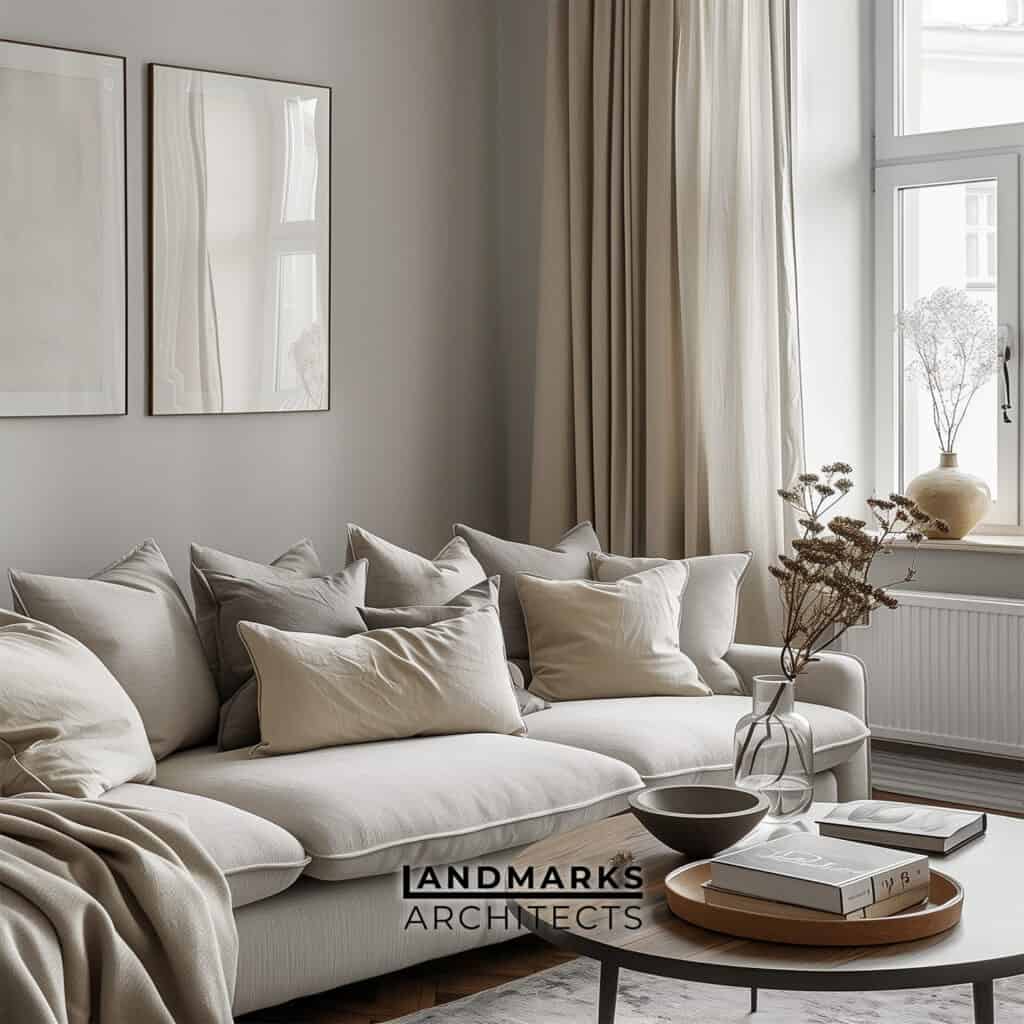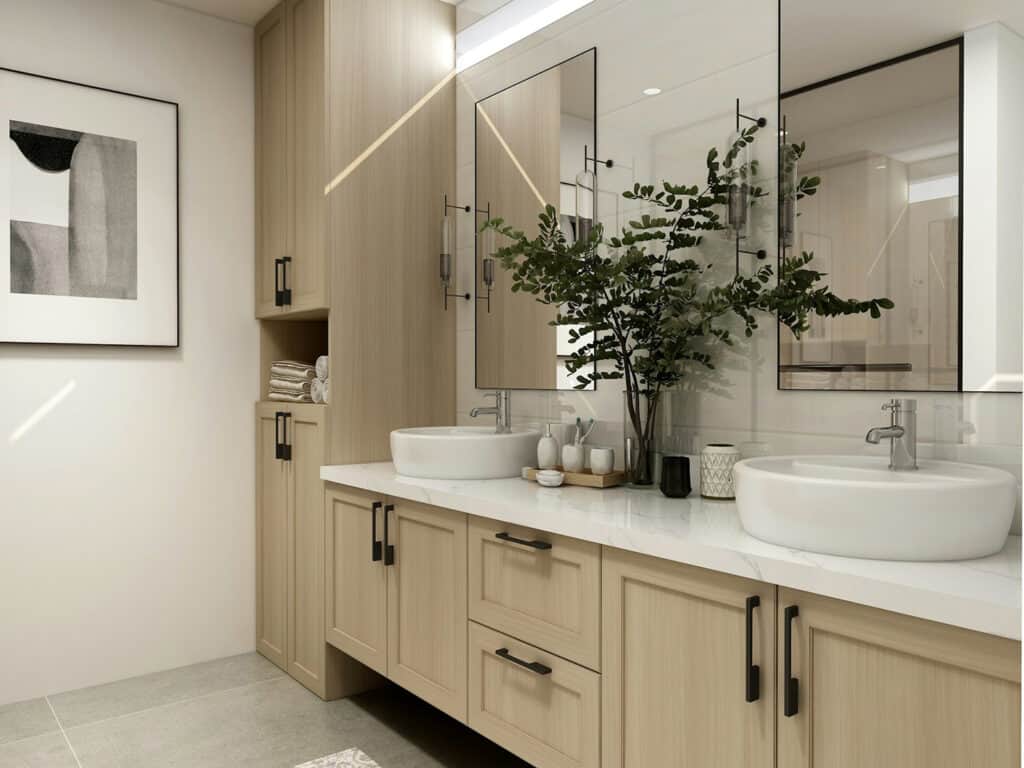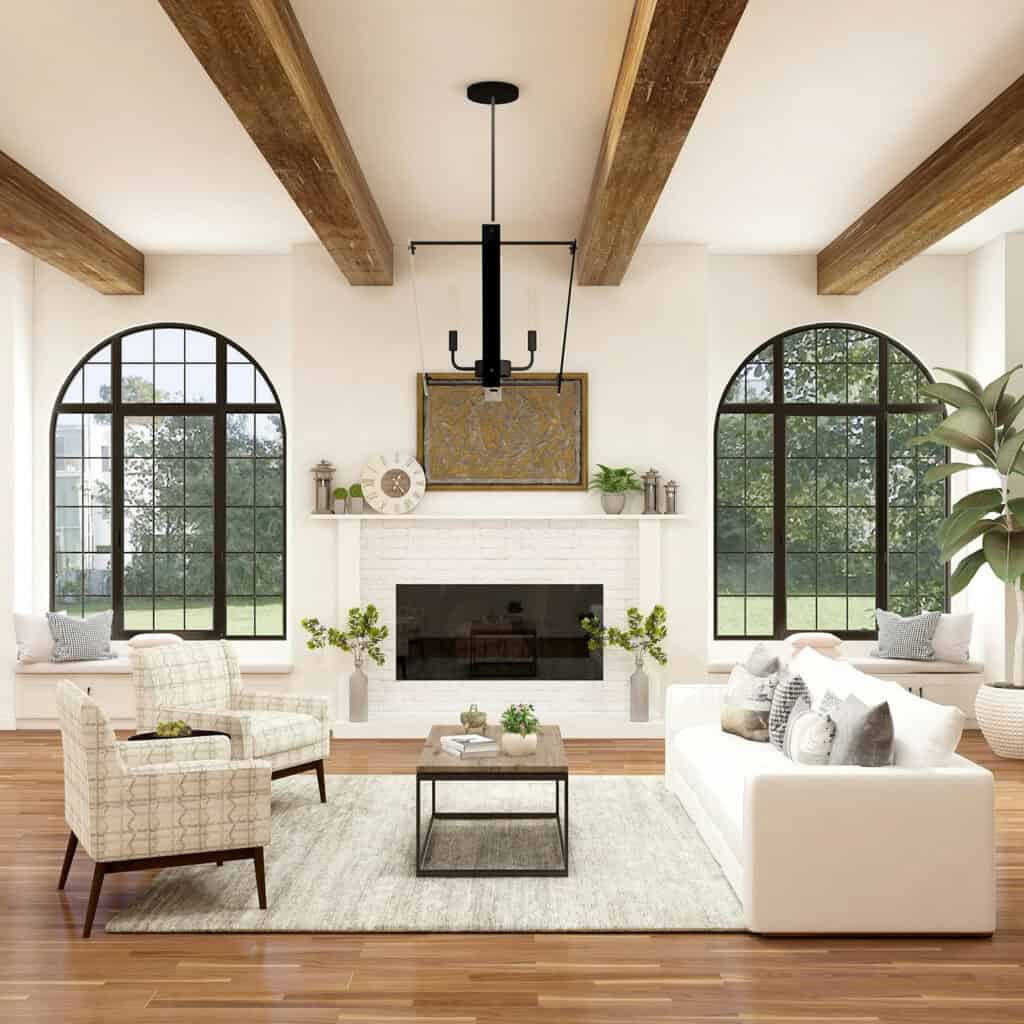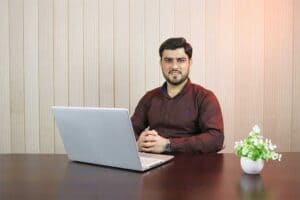


Do you want a home or workspace that feels harmonious and elegant but feel overwhelmed by the design choices? Achieving a balanced interior can be a daunting task.
As a homeowner or designer, you play a pivotal role in shaping your environment. At Landmarks Architects, we know balance is key to creating inviting, cohesive spaces. In this article, we’ll guide you through:
- Understanding what symmetrical balance is
- Key elements for achieving this harmony
- Practical tips for incorporating it into your designs
Ready to elevate your space with timeless elegance? Keep reading to see how symmetrical balance can transform your interiors, bringing order and serenity.
Understanding Symmetrical Balance

Symmetrical balance is important in interior design because it creates order and harmony. It ensures the same visual weight is evenly spread, making a space feel stable and cohesive. Let’s take a closer look at what symmetrical balance is and how it shapes interior spaces.
What is Symmetrical Balance in Interior Design?

Symmetrical balance is when design elements are arranged to create equal visual weight on both sides of a central axis. This is seen when similar items, like matching chairs or lamps, are placed opposite each other.
It creates a sense of predictability and is often used to bring calm and order to a space.
Key Characteristics

- Creates order and stability.
- Evokes calm and serenity.
- Works across various styles.
- Uses matching elements.
- Enhances harmony in spaces.
Incorporating Symmetrical Balance
Symmetrical balance enhances harmony and visual appeal in interior design. It requires choosing furniture, colors, patterns, art, decor, and lighting to create a unified and welcoming space.
1. Furnishing and Layout

Placing major furniture pieces correctly is key to creating a balanced room. A symmetrical layout often includes two matching chairs facing each other with a coffee table in between. This setup creates a clear central axis, guiding the eye through the space.

Using larger pieces, like sofas with matching side tables, adds visual balance. Each piece should work together to create a harmonious and inviting design. Once the layout is set, colors and patterns bring everything together, enhancing the overall look.
2. Color and Pattern

Using a consistent color palette is essential for maintaining symmetry. Shades of the same hue create a unified look, while similar patterns in textiles like pillows and curtains enhance the aesthetic. Once furnishings and colors are arranged, wall art and decorative objects complete the symmetry.
See also Form in Interior Design: 10 Principles to Elevate Your Space
3. Art and Decor

Decorative elements help reinforce symmetry by maintaining visual equilibrium across a room. The placement of wall art and decorative objects significantly impacts the sense of balance.
For harmony, place artworks symmetrically, flanking a central focal point like a fireplace or large piece of furniture. Finally, symmetrical lighting ties everything together.
4. Lighting

Lighting plays a vital role in achieving visual balance. Using matching lighting fixtures, like chandeliers and wall sconces, helps create balance in a space. Placing a floor lamp on either side of a sofa enhances this effect, ensuring that light distribution feels even.
Benefits of Symmetrical Balance
Symmetrical balance offers many benefits in interior design, improving both aesthetics and functionality.

Enhancing Space Perception: Symmetrical arrangements can create the illusion of a larger room. By aligning furniture and decor along a central axis, spaces appear more organized and visually appealing.

Improving Functionality: A balanced room defines zones effectively. Symmetrical layouts provide clear pathways, making movement within the space smooth and intuitive.

Emotional Impact: Symmetrical design promotes a sense of calm and order. This is particularly beneficial in bedrooms and living rooms, where tranquility is sought.
See also: Harmony in Interior Design: 10 Tips for Balance and Unity
Symmetrical Balance in Interior Design: A Recap

Symmetrical balance is a key interior design principle that makes spaces feel timeless, harmonious, and visually appealing. By arranging furniture, decor, and lighting evenly, you can achieve balance and create a room that is both stylish and functional.
In contrast, asymmetrical balance offers a more dynamic and less predictable design, which can also add interest and energy to a space.
Want a home that looks effortlessly elegant? Apply symmetrical balance today and watch your space come to life with harmony and style!










